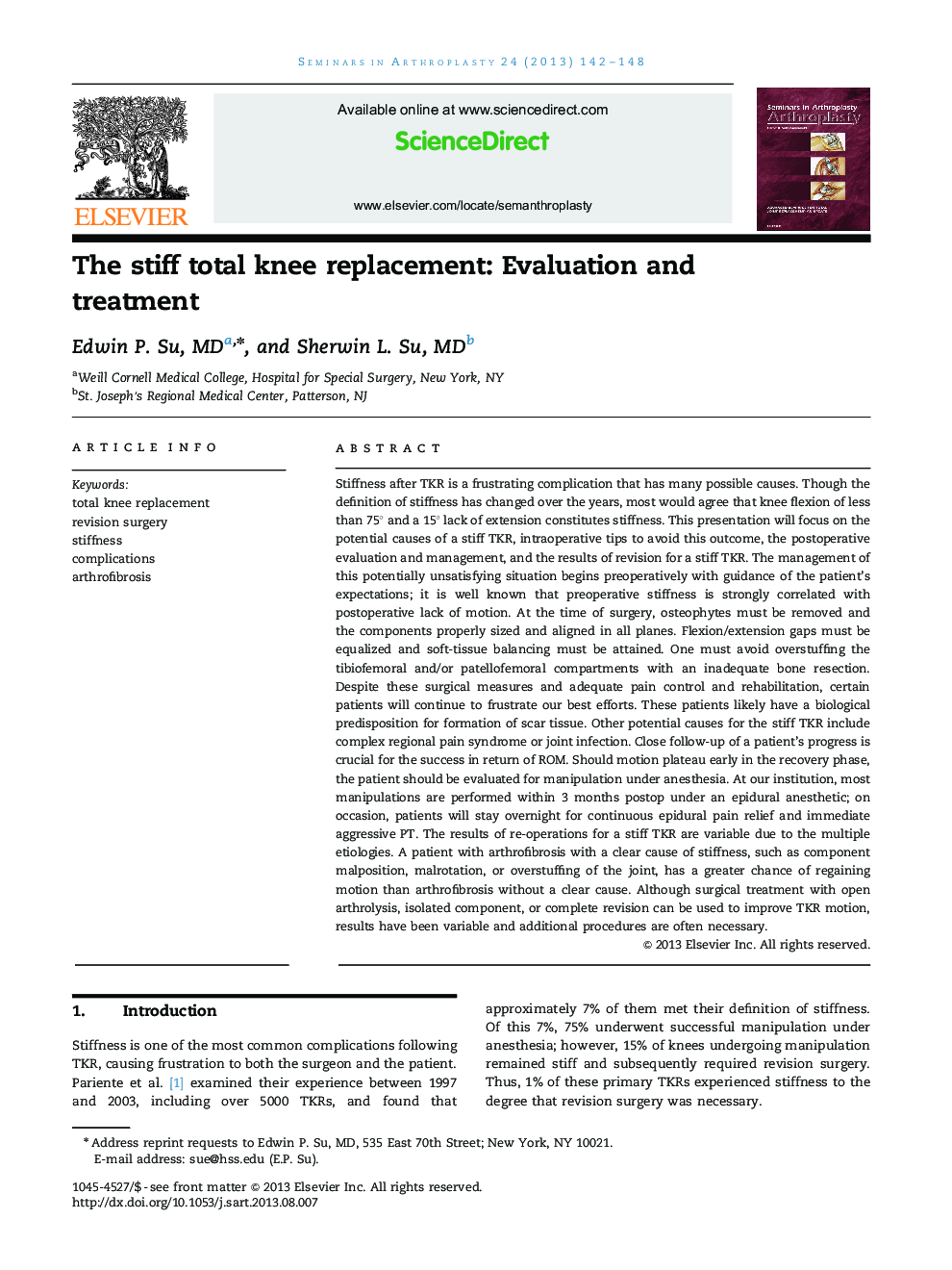| کد مقاله | کد نشریه | سال انتشار | مقاله انگلیسی | نسخه تمام متن |
|---|---|---|---|---|
| 4094000 | 1268436 | 2013 | 7 صفحه PDF | دانلود رایگان |

Stiffness after TKR is a frustrating complication that has many possible causes. Though the definition of stiffness has changed over the years, most would agree that knee flexion of less than 75° and a 15° lack of extension constitutes stiffness. This presentation will focus on the potential causes of a stiff TKR, intraoperative tips to avoid this outcome, the postoperative evaluation and management, and the results of revision for a stiff TKR. The management of this potentially unsatisfying situation begins preoperatively with guidance of the patient’s expectations; it is well known that preoperative stiffness is strongly correlated with postoperative lack of motion. At the time of surgery, osteophytes must be removed and the components properly sized and aligned in all planes. Flexion/extension gaps must be equalized and soft-tissue balancing must be attained. One must avoid overstuffing the tibiofemoral and/or patellofemoral compartments with an inadequate bone resection. Despite these surgical measures and adequate pain control and rehabilitation, certain patients will continue to frustrate our best efforts. These patients likely have a biological predisposition for formation of scar tissue. Other potential causes for the stiff TKR include complex regional pain syndrome or joint infection. Close follow-up of a patient’s progress is crucial for the success in return of ROM. Should motion plateau early in the recovery phase, the patient should be evaluated for manipulation under anesthesia. At our institution, most manipulations are performed within 3 months postop under an epidural anesthetic; on occasion, patients will stay overnight for continuous epidural pain relief and immediate aggressive PT. The results of re-operations for a stiff TKR are variable due to the multiple etiologies. A patient with arthrofibrosis with a clear cause of stiffness, such as component malposition, malrotation, or overstuffing of the joint, has a greater chance of regaining motion than arthrofibrosis without a clear cause. Although surgical treatment with open arthrolysis, isolated component, or complete revision can be used to improve TKR motion, results have been variable and additional procedures are often necessary.
Journal: Seminars in Arthroplasty - Volume 24, Issue 3, September 2013, Pages 142–148